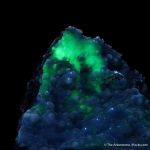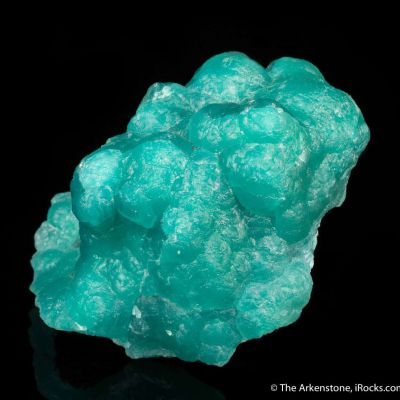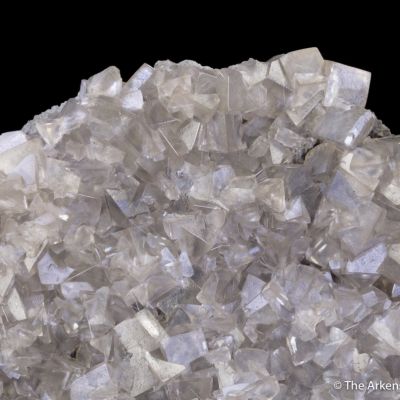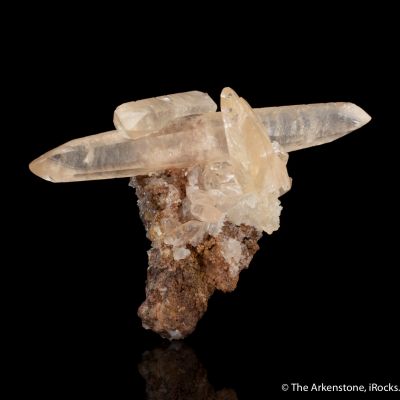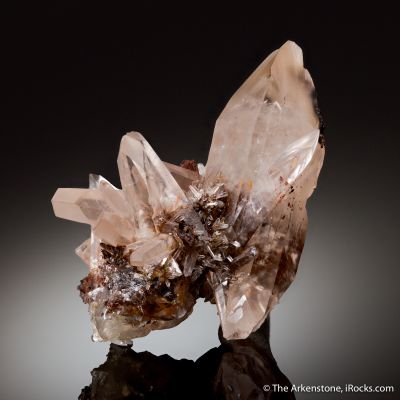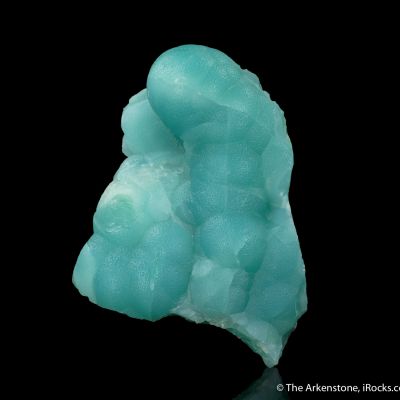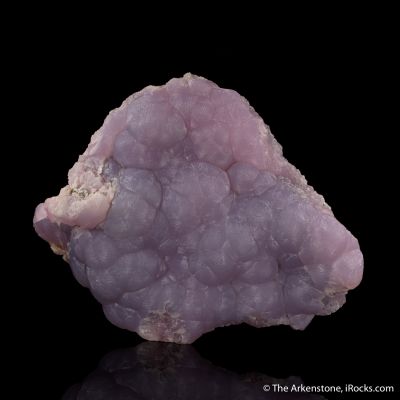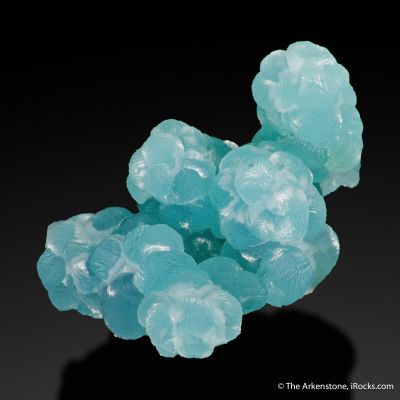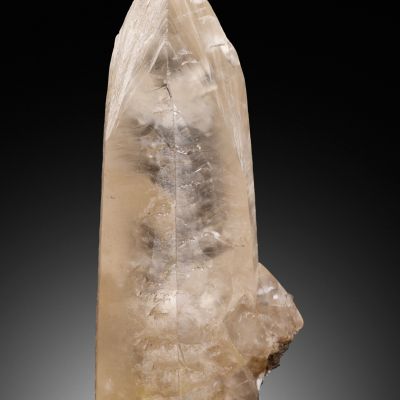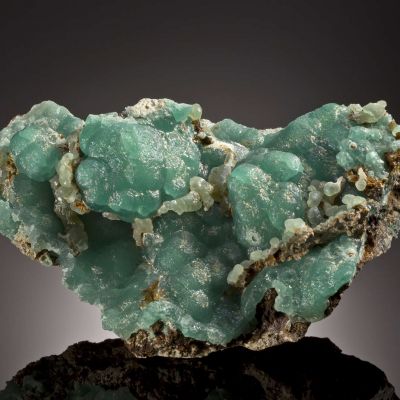- CSG-54
- Smithsonite with Adamite var. Cuprian-REE
- Hilarion Mine, Lavrion, Lavreotiki, Attica, Greece
- Large Cabinet, 14.9 x 11.3 x 8.3 cm
- Ex. Christos Spiromitros
- $3,000.00 Payment Plan Available
Visually stunning and highly unusual, this large-cabinet combination piece is from the well-known Hilarion Mine and features intergrown botryoidal Smithsonite with amazing blue and blue-green Adamites that range from a spectacular, scintillating turquoise-blue (made so by REE -Rare Earth Elements, analyzed) to classic, gemmy cuprian-green. Accented with a few small white Calcites, this is a gorgeous display plate with an amazing blue color we almost never see in nature. The sparkle and saturation of the adamite is hard to convey. The contrasts in form and color only add the the interest and beauty. Under UV light, you can see the neon-green fluorescence of the Adamite as it expresses itself below the overlying Smithsonite. From a single find in late 2014, this is one of the largest fine specimens recovered, and it has an intense color saturation that is even better in person. Note from our source, who sold these to us previously while keeping the best in his private collection until now: The color seems to be due to an additional small concentration of REE elements present, that boost the coloration of cuprian adamite alone. These sparkling, really unique pieces came from a single find in late 2014, and have now been definitively analyzed by a University in Thessaloniki (the SEM results and photos are available upon request). These were initially thought to be aluminum-enhanced, but the results are otherwise. Firstly, there was no aluminum at all. However, we found REE(!!!) in both the green and blue adamite. Both adamites had Cu, the blue is Cuprian +REE and the green is slightly Cuprian +REE. Cs, Ce and Dy (Cesium, Cerium & Dysprosium) were the REE(Rare Earth Elements) we traced. Particularly, the highest amount of Dy in the green material was 1.02% with the Cu not surpassing 1%. The blue material had both Cs & Ce (maximum Cs was 0.88% in some cases if I recall correctly, and maximum Ce around 0.7% in other areas of the same specimen) and maximum Cu-content was around 2%.(ranging from 0.6% to 2.2% on the same specimen!). I just spoke with a few contacts of mine in other universities and told me that this really very interesting and rare, especially with the specific REE we traced. It makes sense, because the host rock is REE-rich. I have to note that there is no research that proves the color is because of any other elements other than Copper but I observe the correlation of a unique color to the REE content.





